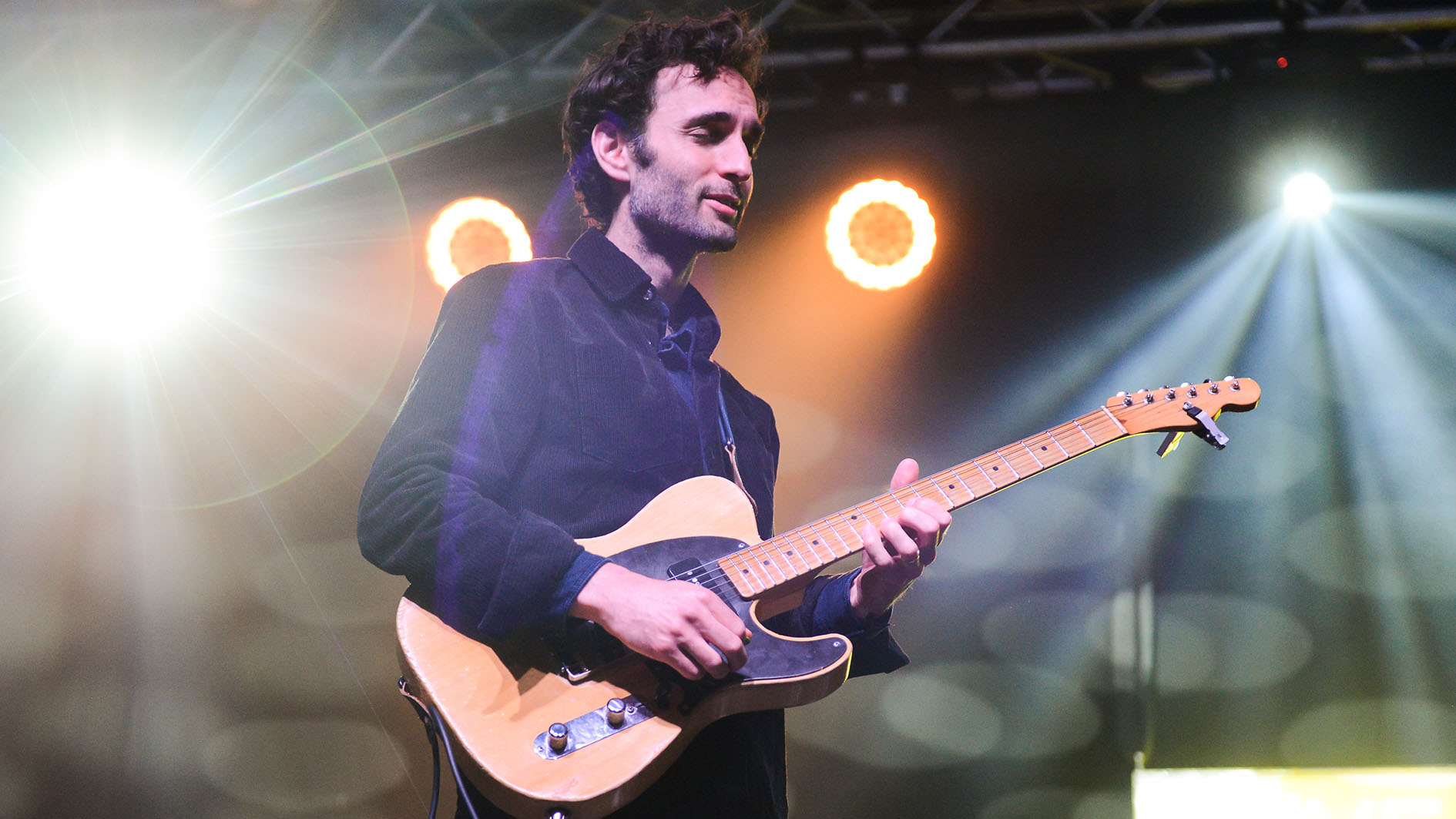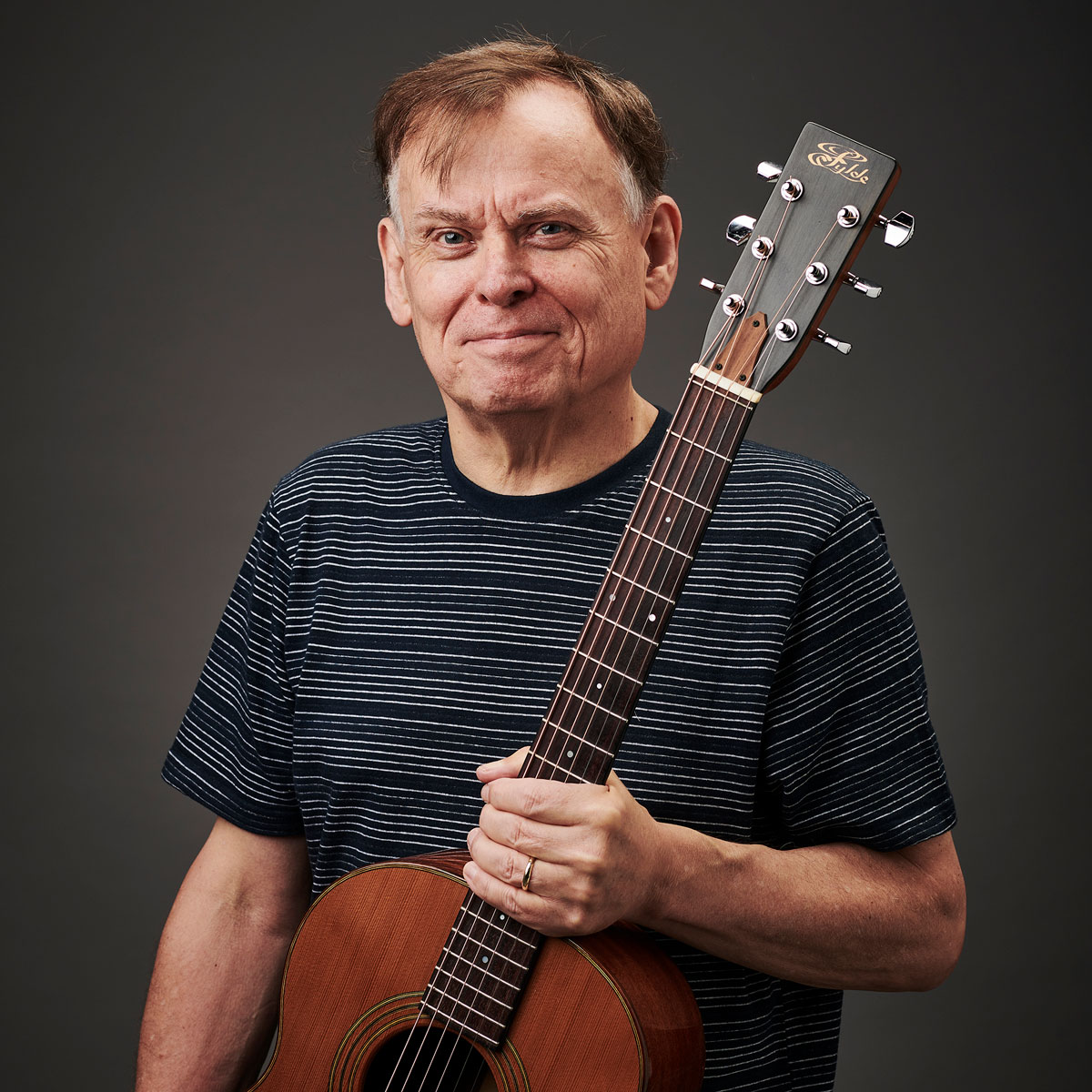Julian Lage: “A lot of what you hear on this record is first or second take. I like the tape to be rolling when I'm writing because there's a certain sense of discovery”
The guitarist's new album, View With A Room, is full of his signature virtuoso-level guitar playing with splashes of colour provided by special guest Bill Frisell

We spoke to Julian Lage while he was on tour in Italy, performing material from his forthcoming second album for Blue Note, View With A Room.
Accompanying Lage on the album is regular bassist Jorge Roeder and drummer Dave King, but this time the trio has been augmented by Bill Frisell, who appears on several tracks.
“Bill’s the absolute master of masters,” Lage says. “So we feel very privileged to expand the group to include him. It was a really fun record for us to make.”
How did you meet Bill Frisell?
“I went up to him at Newport Jazz Festival when I was probably around 17 years old. I was there with Gary Burton’s band. I was a lover of Bill’s music since I got into jazz guitar. He’s a hero to me, so I said hello to him and he so graciously said, ‘I think I’ve heard about you. I heard you on the radio with Gary.’
“In the last five years or so, we started playing duo concerts together; we did a short tour in the United States. Anyway, our worlds have been kind of intermingling for many years now, and upon writing this record I was pretty sensitive to the fact that I wanted Bill to be a part of the band in the capacity of playing rhythm guitar, adding sonic architecture.”
What’s your process for writing music?
Get The Pick Newsletter
All the latest guitar news, interviews, lessons, reviews, deals and more, direct to your inbox!
“I write using pencil and paper with a guitar, that process is relatively consistent thus far. My approach is, in a way, quantity over quality. I write so many songs. Even for this record there were 35 to 40 songs and you just whittle it down – the record we made is 16 songs. And the ones that didn’t make it to View With A Room will be released as a separate project.
“I like having an abundance of material, but I don’t have any one approach to it other than throw it against the wall, and see what sticks. I feel very lucky, because in this case, I was afforded space and time to wake up every day, write and show the songs to my partner in crime, Margaret Glaspy, who produced the record. She is also my dearest friend and wife – I show it to her and get thumbs up, thumbs down, that kind of thing.”
In the past you’ve mentioned you’re very aware of the legacy of jazz guitar players from previous generations?
“Well, the electric guitar as we know it has had so many iterations. My personal obsession, as a fan of the guitar, tends to be directed towards the mid-1930s, to mid-40s, even into the early 50s. A time when the electric guitar, at least on recordings, appears to have a kind of a brightness, a volatility, but is also very warm.
“I wouldn’t say that it’s without effect, because the effect of the recording process is adding compression, adding distortion. It’s being affected, but the way it’s being affected is essentially appealing to me.

“In making a guitar-trio record that’s now expanded to two guitars, bass and drums, it was important that my sound consistently reflects those qualities, from song to song. Almost the way a tenor sax player in a jazz band has the same tenor sax for the whole record. Typically, it’s kind of a unifying factor, whereas Bill’s role shows a little bit more of the evolution of the history of the guitar.
“There are times where [he’s playing] a Jazzmaster with tremolo and reverb. And that has implications to the lineage of surf guitar and rock guitar and all that. There are times where his role is baritone Telecaster, which has more in common with stuff you would hear in Bob Dylan’s groups with T Bone Burnett.
“And then there are times when we’re closer together, and we have this thing where we’re rolling around each other on a song like Auditorium. I like the singularity of tone because then I can just keep changing the content. And I think Bill is a player who deeply connects to that as well.”
Were there intensive rehearsals before you went into the studio to record?
“We did two days of rehearsal where I taught the band the music. I’d sent Bill the music weeks before so he was familiar with it. I’d made ‘micro-demos’ where I played a short acoustic guitar performance of every song: ‘Here’s the melody and here’s how it ends.’
I’ve been using Ron Ellis pickups for many years and, to me, they’re perfection
“We all lived with that for a little bit, and a lot of what you hear on the record is first or second take. I particularly like the tape to be rolling when you’re learning the music because I think there’s a certain sense of discovery. You know, it’s not like you’ve played it a million times and this is definitive.
“You just kind of see if you capture something cool and, if you don’t, you try it again. So, the rehearsal, in a way, was very close to the recording itself. There’s not a big difference.”
What gear did you take into the studio with you for this album?
“I brought a lot of guitars, but I only used one for the majority, which is a Collings 470 JL. It’s a signature model that I’ve been playing for a while and I just love it. A big feature of the guitar is it’s hollow but with no f-holes, and also the centrepiece is its Ron Ellis pickups.
"I’ve been using Ron Ellis pickups for many years and, to me, they’re perfection. So Ron made what he calls ElliSonics, basically centred around the design of the old Dynasonic pickups, with certain modifications that we both feel are for the benefit of the sound.
I pretty religiously use something called a [Shin-ei] B1G 1, which is essentially a clean boost and it’s always on... it just opens up the higher range of frequencies so that they’re a little more, to my ears, seductive and less pingy
“I also brought in a ’54 Tele, a ’55 Gold Top Les Paul that I love, but I just played the Collings; it just sounded so great. It’s going through a Magic Amplifiers Vibro Deluxe, which is by a gentleman named Mike Moody, in California, whose amplifiers I absolutely love. He makes really, really great-sounding amps. So it’s similar to my conception about the history of guitar; I feel like he embodies the history of amplification. It’s everything you want, and nothing you don’t.
“As for effects, I pretty religiously use something called a [Shin-ei] B1G 1, which is essentially a clean boost and it’s always on. It just gives a little more top-end. It doesn’t seem to obscure the sound, it just opens up the higher range of frequencies so that they’re a little more, to my ears, seductive and less ping-y. And then I use a Strymon Flint reverb and Divine Noise cables, which I’ve been using forever. I just think they’re wonderful, very reliable. So, you know, it’s nothing terribly diverse, but it’s what I like.”
- View With a Room is out now via Blue Note.
With over 30 years’ experience writing for guitar magazines, including at one time occupying the role of editor for Guitarist and Guitar Techniques, David is also the best-selling author of a number of guitar books for Sanctuary Publishing, Music Sales, Mel Bay and Hal Leonard. As a player he has performed with blues sax legend Dick Heckstall-Smith, played rock ’n’ roll in Marty Wilde’s band, duetted with Martin Taylor and taken part in charity gigs backing Gary Moore, Bernie Marsden and Robbie McIntosh, among others. An avid composer of acoustic guitar instrumentals, he has released two acclaimed albums, Nocturnal and Arboretum.
“His songs are timeless, you can’t tell if they were written in the 1400s or now”: Michael Hurley, guitarist and singer/songwriter known as the ‘Godfather of freak folk,’ dies at 83
“The future is pretty bright”: Norman's Rare Guitars has unearthed another future blues great – and the 15-year-old guitar star has already jammed with Michael Lemmo











